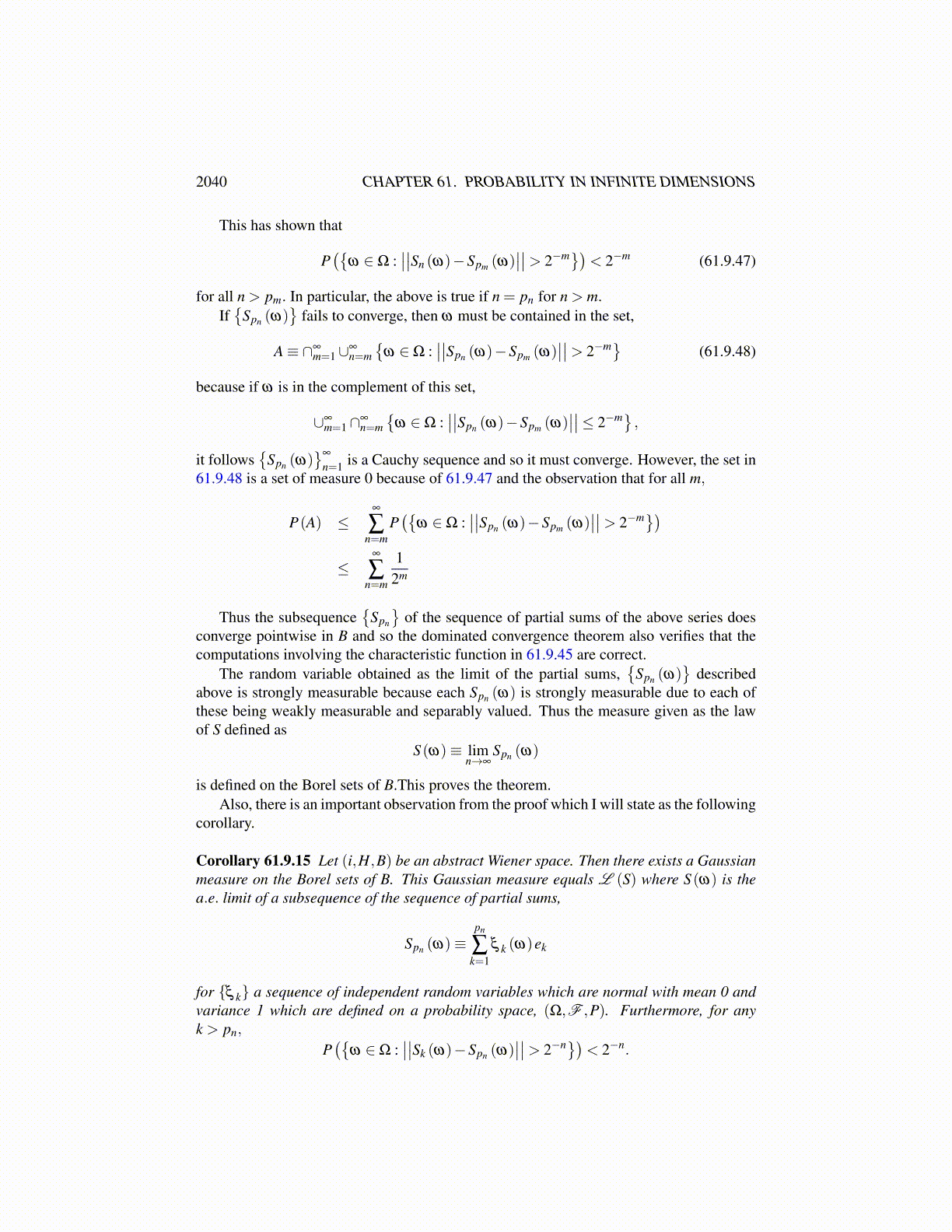
2040 CHAPTER 61. PROBABILITY IN INFINITE DIMENSIONS
Theorem 61.9.14 Let (i,H,B) be an abstract Wiener space. Then there exists a Gaussianmeasure on the Borel sets of B.
Proof: Let E be defined above as the completion of H with respect to that weaker norm.Then from Lemma 61.9.13 and X (ω) given above in 61.9.43,
k2 (X (ω) ,ek)E = ξ k (ω) a.e. ω.
Let {en} be a complete orthonormal set for H. There exists an increasing sequenceof projections, {Qn} ⊆F ({en}) such that Qnx→ x in H for each x ∈ H. Say Qn is theorthogonal projection onto span(e1, · · · ,epn) . Then since ||·|| is measurable, these can bechosen such that if Q is the orthogonal projection onto span(e1, · · · ,ek) for some k > pnthen
ν({
x : ||Qx−Qnx||> 2−n})< 2−n.
In particular,ν({
x : ||Qnx−Qmx||> 2−m})< 2−m
whenever n≥ m.I would like to consider the infinite series,
S (ω)≡∞
∑k=1
k2 (X (ω) ,ek)E ek ∈ B.
converging in B but of course this might make no sense because the series might not con-verge. It was shown above that the series converges in E but it has not been shown toconverge in B.
Suppose the series did converge a.e. Then let f ∈ B′ and consider the random variablef ◦ S which maps Ω to R. I would like to verify this is normally distributed. First notethat the following finite sum is weakly measurable and separably valued so it is stronglymeasurable with values in B.
Spn (ω)≡pn
∑k=1
k2 (X (ω) ,ek)E ek,
Since f ∈ B′ which is a subset of H ′ due to the assumption that H is dense in B, there existsa unique v ∈ H such that f (x) = (x,v) for all x ∈ H. Then from the above sum,
f (Spn (ω)) = (Spn (ω) ,v) =pn
∑k=1
k2 (X (ω) ,ek)E (ek,v)
which by Lemma 61.9.13 equals
pn
∑k=1
(ek,v)H ξ k (ω)
a finite linear combination of the independent N (0,1) random variables, ξ k (ω) . Then itfollows
ω → f (Spn (ω))